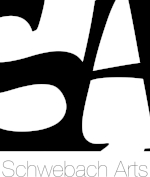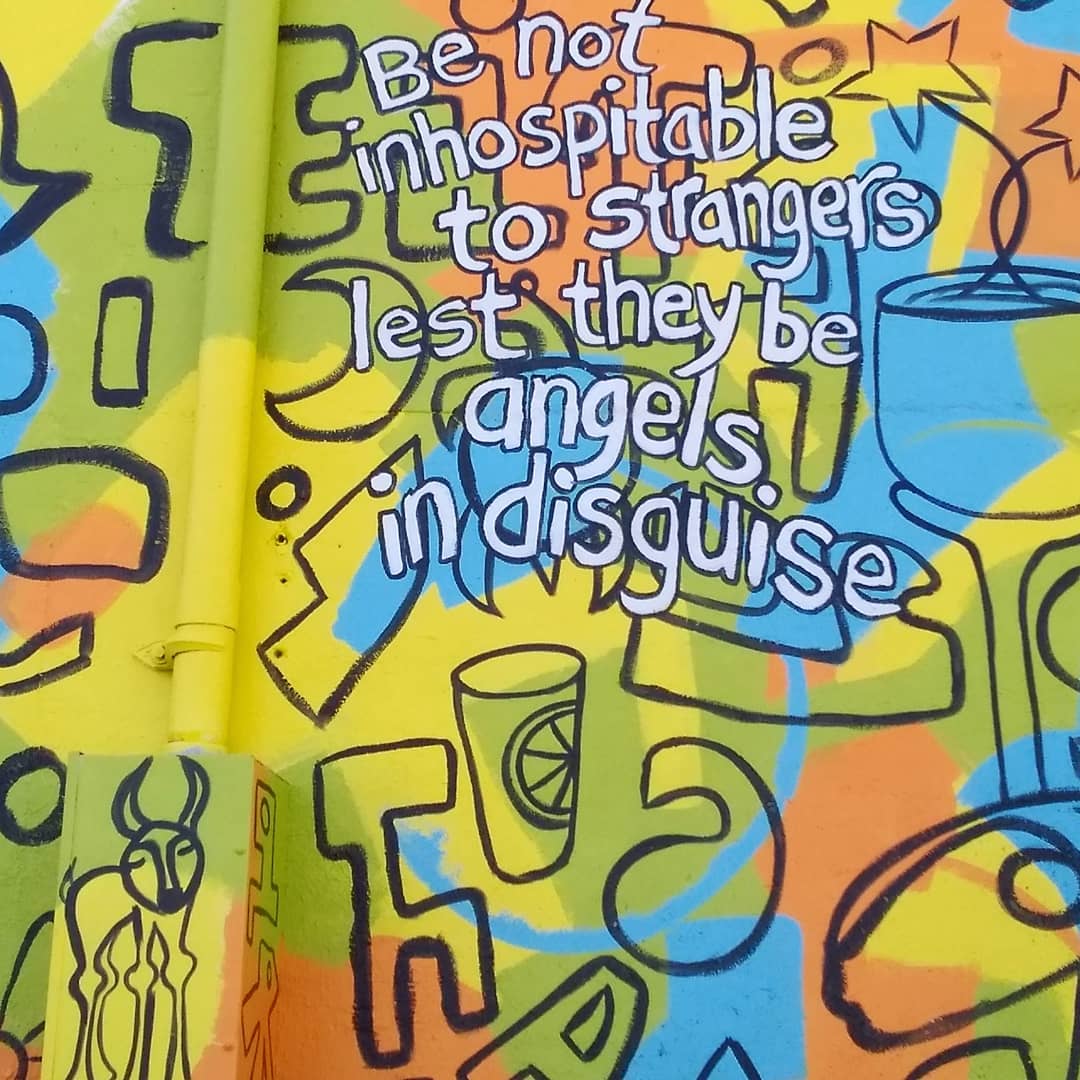“Things We Carry” by Lynn S. Schwebach
by Lynn S. Schwebach
The painting "Things We Carry" portrays a family at the U.S.-Mexico border, terrified their child will get taken and put into a cage. It tells the story of people fleeing violence only to face violence in a country they thought would help.
Fundraising for the humanitarian organization No More Deaths, I am donating all profits from the sale of "Things We Carry." I am also donating all profits from the giclee prints and framed prints of this painting. No More Deaths is a southern Arizona-based humanitarian organization. The group provides food, water and medical care for people walking the Arizona desert on foot. These desert walkers are escaping dangerous, life-threatening conditions in their own countries.
Read any article or website on what drives people to leave their own countries and walk a desert in over 100-degree weather, and the stories you find are chilling. Parents often relate how drug-related gangs threaten to kill their children if they don't give the gangs their money. Mothers tell of their very young boys getting recruited by these threats into these deadly gangs.
Why I am Fundraising
As I painted this summer, these horrific stories wound through my thoughts. Working as a journalist 12 years ago, I wrote about the immigration crisis. Why are we still unable to enact a humane and sensible immigration policy? And why does the current administration have to demonize migrants, turning this crisis into a catastrophe?
Based on this unending crisis, this painting developed. It's about a man, wife and child escaping the dangers of their own country only to get chased (the monster nipping at the woman's heels) and criminalized by the United States. Refugees thought America would come to their aid, but find themselves facing another kind of threat. And probably most horrible of all, the painting's woman must hide her child under her shirt in fear that border patrol will wrench the baby from her.
The American Civil Liberties Union states that from June 2018 to June 2019, the U.S. separated more than 900 children, including babies and toddlers, from their parents at the border. Most horrific, border patrol put these kids into cages. Some call these facilities concentration camps. That my government would take children from their parents and encage them is not something I believed could happen after the horrors of World War II.
When I started this artwork, I did not know how it could help migrants until I went to an artist's talk at a nearby gallery, Artworks Loveland. Many things in life seem to appear when we need them, and I believe a wind or spirit led me to this gallery talk. (For more on this inspiration wind, see my article on Sheila Dunn and Ruach.)
Artists Who Volunteer
In June 2019, Jennie Milner, who I follow on Facebook and whose artwork I have long admired, advertised an upcoming discussion. Her talk "Holding Space and Having Conversation about Immigration" would center on building connections through art and humanitarian aid.
Fundraising was not on my mind when I went to Milner's talk, but she along with another artist, Maria Singleton, shared how other artists contribute. Raising awareness of border policies and procedures became apparent.
In Milner's case, as a mural artist, she participated with the International Sonoran Desert Alliance to create and paint a colorful, eye-popping mural in Ajo, Arizona. On her blog, Milner says, "she decided to go to Ajo and paint a mural for the town to celebrate the effort to save lives."
A section of the mural Jennie Milner completed in Ajo, Arizona.
Ajo, Arizona
Ajo is in the heart of the Sonoran desert and a town located 43 miles from the Mexico border—the deadliest stretch of the border for migrants to cross. This town is becoming an artist's haven, which drew Singleton and her husband to this community during the winters. However, Singleton described the emotional rollercoaster she went through when she found out about the migrants who die in the desert surrounding her new home.
The Sonoran Desert around Ajo, Arizona.
The Sonora Desert.
On average, the remains of one person is found every 3 days in this inhospitable desert. Over 150 bodies are found each year. Only days before this talk, Singleton described how an Arizona man had been in business in Phoenix for over 30 years. The U.S. deported him to Mexico. In trying to get back to his family in Phoenix, he attempted to walk this deadly desert, and he died. They had recently found his remains, Singleton said.
The Sonoran deaths motivated Singleton to action. She brings water and food to the desert for migrants as a volunteer. Singleton also has painted a mural and organized other art projects and hosts other art-related special events.
No More Deaths also advocates for migrants. The group runs a soup kitchen in Nogales, Mexico, and teaches English to asylum seekers.
The gallery became quiet as Singleton narrated her experiences, bringing water jugs to the desert, trails, sometimes finding a body. "Things We Carry," which I had just finished, entered my mind as a first step in volunteering. I left the talk knowing I would donate any money I could raise to this organization.
Fundraising and Volunteering for Change
I want to do more and will be looking for ways in the future to volunteer. But if you are looking for a way to volunteer "from afar" as the No More Death website states, donating is an important step.
Singleton and Milner explained that this is not a political issue. This is a humanitarian issue. In other words, these are people who need help irregardless of their legal status. What would you do if someone threatened to kill your kids? I know what I would do and a hot, 100-degree foodless desert would not deter me.
You can buy the original, alcohol ink painting "Things We Carry" (all proceeds go to No More Deaths), on my Etsy shop here.
To buy a giclee print of "Things We Carry" (all proceeds go to No More Deaths), go my Etsy shop here.
To buy a framed giclee print of "Things We Carry" (all proceeds go to No More Deaths), go to my Etsy shop here.
Visit my Etsy shop, go to Schwebach Arts on Etsy.
Visit my fine art website, go to Schwebach Arts.



